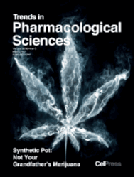
“The prevalence of opioid-associated morbidity and mortality underscores the need for research on non-opioid treatments for chronic non-cancer pain (CNCP). Pain is the most common medical condition for which patients request medical cannabis. Limited research indicates that patients are interested in cannabis as a potential addition to or replacement for opioid medication. This analysis reports on CNCP patient and clinician perceptions about the co-use of cannabis and opioids for CNCP management.
METHODS:
We interviewed 23 clinicians and 46 CNCP patients, using semi-structured interview guides, from six safety-net clinics across the San Francisco Bay Area, and 5 key stakeholders involved in CNCP management. We used a modified grounded theory approach to code and analyze transcripts.
RESULTS:
CNCP patients described potential benefits of co-use of cannabis and opioids for pain management and concerns about dosing and addictive potential. Patients reported seeking cannabis when unable to obtain prescription opioids. Clinicians stated that their patients reported cannabis being helpful in managing pain symptoms. Clinicians expressed concerns about the potential exacerbation of mental health issues resulting from cannabis use.
CONCLUSION:
Clinicians are hampered by a lack of clinically relevant information about cannabis use, efficacy and side-effects. Currently no guidelines exist for clinicians to address opioid and cannabis co-use, or to discuss the risk and benefits of cannabis for CNCP management, including side effects. Cannabis and opioid co-use was commonly reported by patients in our sample, yet rarely addressed during clinical CNCP care. Further research is needed on the risks and benefits of cannabis and opioid co-use.”
https://www.ncbi.nlm.nih.gov/pubmed/30472467
https://www.sciencedirect.com/science/article/pii/S0955395918302287









 “Changes in lipid metabolism are intimately related to cancer. Several classes of bioactive lipids play roles in the regulation of signaling pathways involved in neoplastic transformation and tumor growth and progression.
“Changes in lipid metabolism are intimately related to cancer. Several classes of bioactive lipids play roles in the regulation of signaling pathways involved in neoplastic transformation and tumor growth and progression.